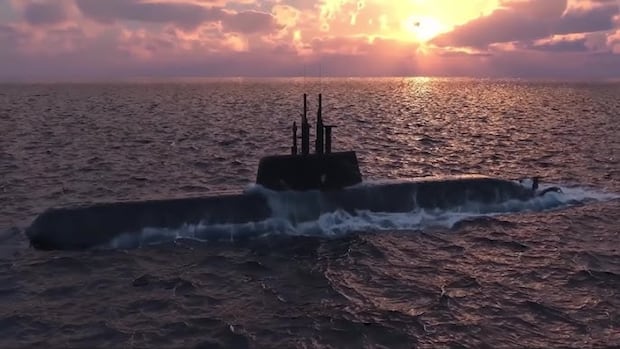A pair of South Korean shipyards — usually fierce competitors — have teamed up on a $20-billion to $24-billion proposal to sell Canada 12 of the country’s latest submarines, known as the KSS-III. The pitch was made in a detailed, unsolicited proposal to the federal government, delivered in early March just ahead of the federal election.
CBC News was recently granted exclusive access to both Hanwha Ocean and Hyundai Heavy Industries (HHI) as well as senior South Korean defence officials.
Canada has asked shipyards worldwide for expressions of interest in building the country’s new submarine fleet. Companies in Germany, Norway and Spain responded in addition to the South Koreans. However, Hanwha Ocean and HHI went a step further and submitted a highly detailed proposal that not only proposed the sale of the KSS-IIIs, but the establishment of specialized maintenance facilities on both coasts.
Here are five things to know about the KSS-III and the South Korean proposal.
Missile, torpedo capabilities
The KS-III is a diesel-electric attack submarine, capable of firing torpedoes and submarine-launched ballistic missiles (SLBM). It displaces about 3,600 tonnes. The South Korean Navy is planning to build nine of the boats in three batches. A total of three submarines have been launched and two have entered service. They have an estimated speed of about 12 knots on the surface and 20 knots while submerged, with a cruising range of 19,000 kilometres. CBC News saw the first two of the second batch of KSS-IIIs under construction at the Hanwha Ocean yard.

Lithium-ion battery powered
Rather than relying on traditional lead-acid batteries, the KS-III draws its power from lithium-ion batteries, which were developed by Samsung SDI. Hanwha Ocean officials in a background briefing claim the new batteries allow for greater cruising speed and longer submerged times. The company claims the boat can remain underwater for more than 21 days, which would be essential for Canada in the Arctic. Korea is only the second country in the world to power its subs with lithium-ion batteries. Japan was the first.
Systems developed outside U.S.
Hanwha Ocean officials say the combat-management system that controls the KS-III is all-Korean-designed — a key point given recent concerns expressed that the command-and-control system chosen for Canada’s new frigates is made in the United States. They say Canada, should it purchase the submarine, would have a choice of integrating its own system, a foreign-purchased one or the existing Korean system. It could also purchase Korean-made torpedoes and missiles, rather than rely on United States or European weapons.
As Ottawa rethinks U.S. weapons contracts, South Korean arms manufacturers want to resupply Canada’s depleted military with everything from howitzers to submarines. CBC’s Murray Brewster got exclusive access to one company angling to become Canada’s new high tech arsenal.
Highly automated
Each of the KS-IIIs incorporate a high degree of automation and would operate with a standard crew size of 33 sailors. Although, there is room to embark as many as 50 crew members. There are three decks, which Hanwha Ocean officials emphasized would allow for mixed gender crews. The proposal submitted to Ottawa includes a detailed crew training plan that would see Canadian sailors given basic and tactical training in Korea while the boats are being constructed. The plan would be for a Canadian crew to sail the boat and be ready to conduct operations almost immediately.
Delivery ahead of navy deadline
The Royal Canadian Navy has set 2035 as the deadline for delivery of its first new submarine to replace the old Victoria class. Hanwha Ocean officials said Canada could have four submarines by that time, with the first one delivered between 2030 and 2032. The rest would follow every couple of years at intervals set by the Canadian government. The schedule is provided a contract is signed next year. The proposal also includes the notion of constructing one or two maintenance facilities in Canada — perhaps one on each coast. But that would be a decision of the Canadian government and the cost would be in addition to the $20-billion to $24-billion initial purchase of the boats. Hanwha Ocean officials said the deliveries would be on time and on budget with no surprises.

